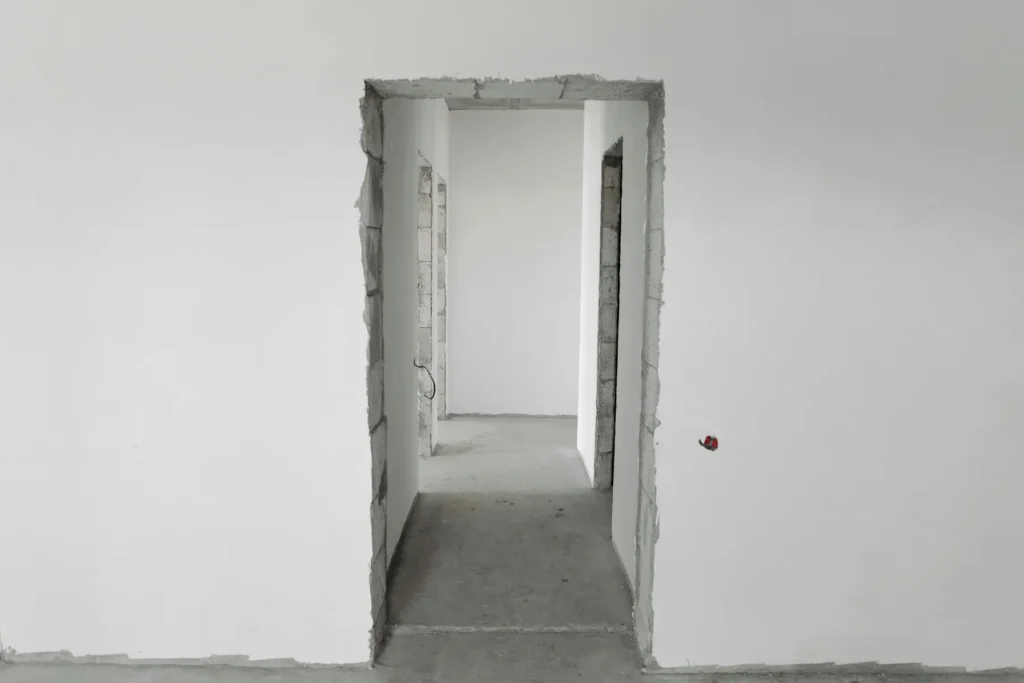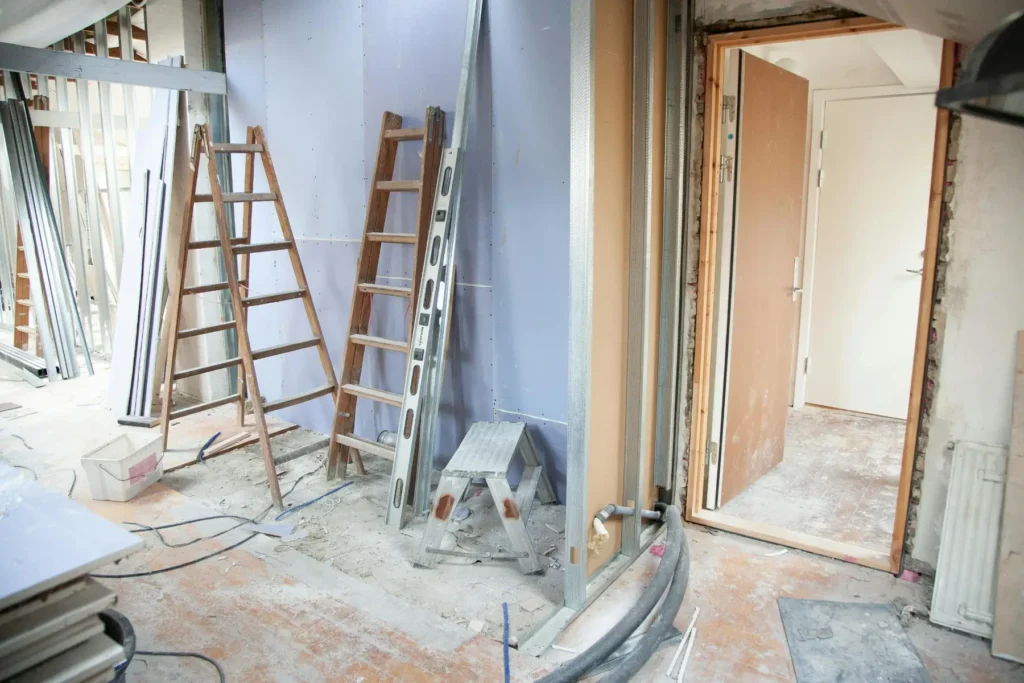
Signs of Structural Damage After Removing Columns or Walls
In Dubai’s booming villa renovation market, property owners often remodel their homes by removing internal walls or structural columns to open up living spaces. While this can enhance aesthetics and functionality, removing a structural element without proper engineering oversight can cause serious structural damage—sometimes with delayed or hidden consequences.
This article explains the warning signs of structural damage after removing walls or columns, how to detect them early, and what steps you should take to restore the structural safety of your villa. At Structural Solutions, we provide fast, expert structural assessments and remedial designs across Dubai to help homeowners and contractors correct unauthorized modifications before things get worse.
Table of Contents

1. Why Structural Damage After Removing Columns Are High-Risk Without Engineering Input
Not all walls in your villa are safe to remove. Some serve as load-bearing elements, transferring loads from slabs or beams down to the foundation. Removing them without proper analysis can trigger:
- Uneven load distribution
- Slab deflection or sagging
- Beam overstress
- Foundation settlement
- Cracks and potential collapse
Even partition walls may be connected to load paths or help with lateral stability. Every case must be reviewed structurally, not just architecturally.
2. Top 12 Structural Damage Signs to Watch For
🔸 1. Ceiling Cracks
- Long or spider-web cracks along the ceiling after wall removal indicate that the slab is sagging due to insufficient support.
- Can occur weeks or months later.
🔸 2. Uneven Floor Levels
- If the floor starts sloping or tiles pop out, it may indicate differential settlement or structural warping above.
🔸 3. Wall Cracks (Diagonal or Vertical)
- Diagonal cracks near removed walls or door openings typically indicate stress redistribution.
- Vertical cracks at joints or corners also suggest movement.
🔸 4. Visible Slab Deflection
- Any noticeable dip or sag in slab areas previously supported by a column or wall is a serious concern.
- Might appear near kitchen extensions or living room areas.
🔸 5. Beam Deflection or Cracking
- If beams are bending excessively or cracking at mid-span, they’re likely overloaded due to redistributed forces.
🔸 6. New Noises (Creaking, Popping)
- Sounds of expansion, cracking, or shifting are red flags, especially after structural changes.
🔸 7. Window and Door Misalignment
- When windows or doors begin jamming or not closing properly, it could be due to structural movement.
🔸 8. Foundation Cracking
- Cracks on the floor or perimeter foundation may indicate load issues extending downward.
🔸 9. Roof Leakage or Water Seepage
- Structural movement may break waterproofing layers, leading to leaks—especially at roof slab-wall joints.
🔸 10. Separation Between Slab and Wall
- Gaps or separation lines between slab edges and walls are critical signs of structural shifting.
🔸 11. Columns Showing Stress or Buckling
- Nearby columns may show signs of added stress with hairline cracks or swelling.
🔸 12. Detached MEP Fixtures
- Fixtures like AC ducts, lighting, or fans loosening may indicate structural vibration or movement.
3. Common Mistakes Leading to These Damages
⚠️ Assuming a Wall Is Non-Structural
Many contractors assume that internal block walls are non-load-bearing without checking the slab or beam layout.
⚠️ Removing Columns Without Load Redistribution
Columns may carry point loads from slabs, beams, or even upper floors. Removing them without an engineered plan causes stress failure.
⚠️ Using Unlicensed Contractors
Contractors working without engineering supervision or authority approval often overlook critical load-bearing elements.
⚠️ Skipping Structural Drawings Review
Not referring to original as-built structural plans is a major oversight before any demolition or alteration.
4. How Structural Damage Affects Your Villa
Failing to address post-modification structural issues can lead to:
- Escalating repair costs
- Violation notices from authorities like DM or Nakheel
- Reduced property value
- Unsafe living conditions
- Legal disputes during resale or insurance claims
Dubai’s developers and regulatory bodies enforce strict construction codes. Ignoring unauthorized changes can result in stop work orders, fines, or mandatory rectification.

5. What to Do If You See Damage After Wall or Column Removal
✅ Step 1: Stop Further Modifications
Do not continue renovations or additions until a full structural inspection is performed.
✅ Step 2: Contact a Structural Engineer Immediately
Engage licensed professionals like Structural Solutions to:
- Conduct a structural health check
- Identify load paths and verify support sufficiency
- Use visual inspection, load testing, or structural software
✅ Step 3: Install Temporary Shoring (if needed)
If the slab or beam is under stress, temporary support may be required to prevent collapse.
✅ Step 4: Prepare a Structural Retrofitting Design
Depending on the damage, your engineer may propose:
- Steel/RC transfer beams
- Jacketing nearby columns
- Installing new columns or load walls
- FRP strengthening or post-tensioning
✅ Step 5: Submit to Authorities for Approval
If work was unauthorized, a retrofitting and justification report is required to regularize the construction with:
- Dubai Municipality (DM)
- Trakhees
- Nakheel
- EMAAR or Dubai Properties
6. How Structural Solutions Helps You
We are Dubai’s trusted freelance structural engineering consultants. Our services include:
🛠️ On-Site Structural Damage Assessment
- Crack mapping
- Load path identification
- Immediate shoring recommendations
📐 Advanced Structural Calculations
- ETABS, SAFE, STAAD.Pro modeling
- Retrofitting alternatives
- Beam and slab strengthening designs
📄 Authority Approval and Reporting
- Structural justification reports
- CAD drawings and compliance documentation
- Regularization support with DDA, DM, and developers
7. Dubai Authority Guidelines You Must Follow
✅ Dubai Municipality
- Requires structural drawings and approvals before modification
- Mandates licensed engineer’s input for retrofitting
✅ Nakheel & EMAAR
- Site inspection and violation penalties for unauthorized works
- Must approve structural modifications and strengthening
✅ Trakhees
- Especially strict for villas in free zones (Palm Jebel Ali, Waterfront)
- Requires third-party peer reviews for critical changes
8. Real-Life Case Study – JVC Villa Structural Rectification
Issue: Owner removed internal wall to create open kitchen. Months later, slab sagged 2 cm and ceiling cracked.
What We Did:
- Assessed structural layout and slab loading
- Designed hidden steel beam with column replacement
- Submitted report and got developer approval
- Work completed in 3 days, no penalty issued
Outcome: Safe living environment restored and villa valuation increased.
9. Tips to Avoid Future Structural Damage
- Always consult a structural engineer before removals
- Get NOC from developers and Dubai Municipality
- Insist on original structural drawing review
- Don’t rely solely on contractor advice
- Budget for structural modifications and approvals
10. Contact Structural Solutions Today
If you’ve already removed a wall or column—or you’re planning to—don’t risk it. A small mistake can lead to huge structural problems.
Let us evaluate the safety of your villa and provide a legal and engineering-compliant solution.
📍 Structural Solutions
📞 Visit: www.structuralsolutions.ae
📧 Email: info@structuralsolutions.ae
🛠️ Freelance engineering support. Fast reports. Authority-ready designs.

